Divisional autonomous self-propelled anti-aircraft missile system "Thor"
For a decade and a half that have passed since the start of the development of the Osa air defense missile system, not only the tasks facing troop anti-aircraft missile systems have changed, but also the possibilities for solving them.
In addition to solving the traditional task of combating manned aviation, military anti-aircraft missile systems were supposed to ensure the destruction of aviation weapons - planning Wallai bombs, air-to-ground missiles, cruise missiles such as ALCM and ASALM, UAVs (remotely piloted aircraft) such as BGM-34. To effectively solve these problems, automation of the entire process of combat work and the use of more advanced radars were required.
Changing views on the nature of probable military operations have led to the fact that the requirements for the possibility of overcoming water barriers by military air defense missile systems were removed, but the need was identified for ensuring that all components of these anti-aircraft missile systems have the same speed and passability with BMP and tanks covered parts. Given these requirements and the need to increase the ammunition load of anti-aircraft guided missiles, the division was transferred from a wheeled chassis to a heavier tracked one.
The scheme of the vertical launch of missiles, developed during the development of the C-300 ground-to-ground missile system, made it possible to implement a similar one. the solution in the Thor anti-aircraft missile system, having vertically placed 8 guided missiles along the axis of the BM tower, protecting them from being hit by shrapnel bombs and shells, as well as adverse weather effects.
The leading developer of the Thor anti-aircraft missile system was NIEMI MRP (previously SRI-20 GKRE). Efremov V.P. He was appointed chief designer of the complex as a whole, and Drize I.M. - combat vehicle 9А330 of this complex. The development of an anti-aircraft guided missile 9М330 for Thor was carried out by the MKB Fakel MAP (formerly OKB-2 GKAT). Supervised this work Grushin PD. To the development of missiles and combat vehicles, the means of those. Other industry organizations were also involved in the provision and maintenance.
The composition of the combat vehicle 9А330 included:
- a target detection station (SOC) with systems for stabilizing the base of the antenna and identifying state affiliation;
- guidance station (SN), with the channel coordinator for capturing an anti-aircraft guided missile, two rocket channels and one target channel;
- special computer;
- starting device that provides vertical alternate launch of 8 guided missiles deployed on a combat vehicle and equipment of various systems (starting automation, topographic location and navigation, documenting the process of combat operation, functional control of a combat vehicle, life support, autonomous power supply using a gas turbine electric generator) .
All specified those. funds were placed on self-propelled tracked chassis with high maneuverability. The chassis was developed by the Minsk tractor plant GM-355, and was unified with the chassis of the Tunguska anti-aircraft gun and missile system. The weight of the combat vehicle, including eight guided missiles and a crew of 4 men, was 32 tons.
Target detection station (SOC) is a coherent-impulse radar station of circular viewing of the centimeter range, which has frequency control of the beam in elevation. The partial (beam) 1,5 width degrees in azimuth and 4 degrees in elevation could occupy eight positions in the elevation plane, thus overlapping the sector in 32 degrees. The elevation could be carried out at the same time in three partials. To set the priority of the review by the partitions, a special computer program served. The main mode of operation provided for the tempo of the survey of the detection zone for 3 seconds, with the lower part of the zone being viewed twice. If necessary, a three-part view of the space could be provided with a speed of 1 second. Markers with coordinates 24-x of detected targets were tied into the tracks (up to 10 tracks at the same time). The commander’s indicator displayed the targets in the form of points with vectors characterizing the direction and magnitude of its velocity. Some of them displayed the forms, which contained the route number, the number of the degree of danger (determined by the minimum time of entry into the affected area), the number of the partial in which the target is located, as well as a sign of the operation being performed at the moment (search, maintenance, etc.). During operation in strong passive interference for SOC, it was possible to block signals from the direction of the jammed interference and the distance to the targets. If necessary, there was the possibility of introducing into a computer the coordinates of a target located in the blanking sector in order to develop targeting due to the manual lining of the marker on the target covered with interference and the manual “cleaving” of the mark.
The resolution of the detection station in azimuth was not worse than 1,5-2 degrees, in elevation - 4 degrees and 200 m - in range. The maximum error in determining the coordinates of the target was no more than half the resolution values.
The target detection station with the 2-3 receiver noise figure and 1,5 kW transmitter power provided detection of F-30 meters flying at altitudes of 6000-15 at distances up to 27 km with a minimum probability of 0,8. Unmanned aerial attacks at ranges 9000-15000 m were detected with probability 0,7. A helicopter with a rotating propeller, located on the ground, was detected at a distance of 7 km with a probability from 0,4 to 0,7, hovering in the air at a distance of 13-20 kilometers with a probability from 0,6 to 0,8, and performing a jump to the height of 20 meters from the ground at a distance of 12 thousand m with a probability of at least 0,6.
The coefficient of suppression of signals reflected from local objects in analog channels of the receiving system SOC 40 dB, in the digital channel - 44 dB.
Protection against anti-radar missiles ensured their detection and destruction of their own anti-aircraft guided missiles.
The guidance station is a coherent-pulse radar station of the centimeter range with low-level HEADLIGHTS (phased antenna array), which formed the 1 beam in degrees in azimuth and azimuth and provided electron scanning in the corresponding planes. The station provided a search for the target in azimuth in the 3 sector of degrees and in the elevation angle of 7 degrees, auto-tracking in three coordinates of one target using the single-impulse method, launching one or two anti-aircraft guided missiles (with an interval of 4 seconds) and pointing them.
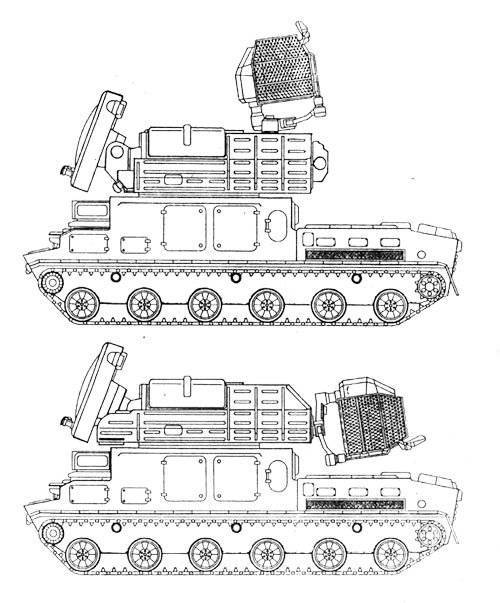
The transfer of the command-driven missile to the board was carried out at the expense of a single transmitter of the station through a phased antenna array. By the same antenna, electron beam scanning provided simultaneous measurement of target coordinates and 2 guided missiles aimed at it. The frequency of the beam to objects - 40 Hz.
The resolution of the guidance station in elevation and azimuth is not worse - 1 degrees, in range - 100 meters. The mean square errors of the auto-follower of the fighter in terms of elevation and azimuth were no more than 0,3 dw., In range - 7 m and in speed - 30 m / s. The mean square errors of tracking the guided missiles in the elevation and azimuth were of the same order, in range - 2,5 meters.
The guidance station with the sensitivity of the 4 x 10-13 W receiver and the average 0,6 kW transmitter power ensured the transition to the automatic tracking of the fighter equal to 20 kilometers with 0,8 probability and 23 kilometers with 0,5 probability.
The missiles in the combat vehicle PU were without transport containers and launched vertically using powder catapults. Structurally, the antenna and starting devices of the combat vehicle were combined into an antenna-starting device, which rotated about a vertical axis.
The solid propellant anti-aircraft missile 9М330 was carried out according to the "duck" scheme and equipped with a device that provided a gas-dynamic declination. The missiles used folding wings, drop-down and fixed in flight positions after the launch of the rocket. In the transport position, the right and left consoles were folded towards each other. 9М330 was equipped with an active radio fuse, radio unit, autopilot with rudder drives, a high-explosive fragmentation warhead with a safety-actuating mechanism, had a power supply system, a system of gas-dynamic control surfaces on the launch site and gas power steering gears on the cruise flight. On the outer surface of the missile body, the antennas of the radio unit and the radio-fuse were placed, and the powder ejection device was also mounted. The missiles were loaded into the combat vehicle with the aid of a vehicle-loading vehicle.
The rocket at launch was thrown out at a speed of 25 m / s catapult vertically. The declination of the guided missile at a given angle, the direction and magnitude of which was introduced from the guidance station to the autopilot before the launch, was carried out before the launch of the rocket engine as a result of the outflow of combustion products of the spec. gas generator through 4 dvuhsoplovyh gas distributor unit mounted at the base of the aerodynamic steering. Depending on the angle of rotation of the steering wheel overlap ducts leading to the nozzles directed oppositely. Combining the gas distributor and the aerodynamic steering into a single unit made it possible to eliminate the use of specials. drive for declination system. The gas-dynamic device rocket leans in the right direction, and then suspends its rotation before turning on the solid-fuel engine.
The launch of the guided missile engine was carried out at a height from 16 to 21 meter (or after a predetermined delay of one second from the start, or when 50 reached the degrees of the deviation angle from the vertical). Thus, the entire impulse of a solid-propellant rocket engine is spent on imparting velocity to the switchgear in the direction of the target. The rocket speed set-up began after launch. At a distance of 1500 m, the speed was 700-800 meters per second. The command guidance process began at a distance of 250 meters. Due to the wide variation in the movement parameters of the targets (in height - 10-6000 m and in speed - 0-700 m / s) and linear dimensions (from 3 to 30 meters) for optimal coverage of high-flying targets on board a guided missile stations of guidance were given parameters of the delay of the operation of the radio-fuse, which depend on the speed of approach of the rocket and the target. At low altitudes, the selection of the underlying surface was ensured, as well as the triggering of the radio-dispenser exclusively from the target.
The launch weight of the 9М330 anti-aircraft missile is 165 kg (including warhead weight is 14,8 kg), the hull diameter is 235 mm, the rocket length is 2898 mm, the wingspan is 650 mm.
Development of the complex was somewhat delayed due to difficulties in developing a tracked chassis. Joint tests of the Thor anti-aircraft missile system took place at the Embeni test site (head V.Unuchko) from December 1983 to December 1984, under the leadership of a commission headed by R. Asadulin. The air defense system was adopted by a decree of the Central Committee of the CPSU and the USSR Council of Ministers of 19.03.1986.
Complex "Dagger" partially unified with the complex "Thor" entered service later 3 year. By this time, for almost ten years, the ships for which this complex was intended left for the sea almost unarmed.
The mass production of BM 9А330 was organized at Izhevsk Electromechanical Plant MRP, an anti-aircraft guided missile 9М330 - at the Kirov Machine-Building Plant. XX Congress of the party MAP, tracked chassis - at the Minsk tractor plant MSCM.
The complex ensured the defeat of a target flying at altitudes of 0,01-6 km, at a speed of 300 meters per second, in the range of 1,5..12 kilometers with the parameter to 6000 m. The maximum range of damage at a target speed of 700 m / s decreased to 5000 m, the range damage heights narrowed 0,05-4 km, and the parameter to 4000 m. The effectiveness of the destruction of the aircraft by one anti-aircraft guided missile was 0,3-0,77, helicopters - 0,5-0,88, remotely-piloted aircraft - 0,85-0,955.
The transfer time from traveling to combat position is 3 minutes, the complex’s reaction ranged from 8 to 12 from, loading a combat vehicle using a transport-charging vehicle to 18 minutes.
Organizationally, the Thor anti-aircraft missile systems brought the divisions into anti-aircraft missile regiments. The regiments consisted of a regiment command post, four anti-aircraft missile batteries (consisting of 4 9A330 combat vehicles, a battery commander's station), service and support units.
The command post of the command post temporarily served as control points of the PU-12М, as the command point of the regiment — PU-12М or the combat control vehicle MP22 and information acquisition and processing machine MP25 developed as part of the automated command and control system (automated troop control system) of the front and also included in the set of assets automated PU chief of the air defense division. The command post of the regiment was mated by the detection radar P-19 or 9С18 ("Dome"), which is part of the radar company regiment.
The main type of combat operation of the Thor anti-aircraft missile system is battery autonomous operation, but centralized or mixed control of these batteries by the commander of the anti-aircraft missile regiment and the head of the air defense of the division was not ruled out.
Simultaneously with the adoption of the Top air defense missile system, the modernization of the air defense system began.
Refinement of existing and development of new anti-aircraft missile system, received ind. Thor-M1 (9K331) were engaged in:
- The Research Electromechanical Institute of the Ministry of Radio Industry (the leading enterprise of the Antey Scientific and Production Association) - the lead company in the Tor-M1 anti-aircraft missile system as a whole (VP Efremov - chief designer) and the 9-X331 combat vehicle (mod. 9-X330) - deputy the main designer of the complex and the chief designer of the BM 9А331 - Drize IM;
- PO "Izhevsk Electromechanical Plant" of the Ministry of Radio Industry - on constructive refinement of the BM;
- Kirov engineering software them. XX Congress of the party Minaviaproma - on the design of four-rocket module 9М334, used in BM 9А331 (Zhary O.N. - chief designer of the module);
- Research Institute of Automation of the Ministry of Radio Industry (leading enterprise of the Agat Research and Production Association) - to develop, within the framework of a separate development work, a unified battery pack KP "Ranzhir" 9С737 (Shershnev AV - Chief Designer), as well as ICB Fakel Minaviaproma and other organizations.
As a result of modernization, a second target channel was introduced into the anti-aircraft missile system, a combat unit of material with enhanced attack characteristics was used in an anti-aircraft guided missile, a modular interface of an anti-aircraft guided missile with a BM was implemented, an increase in the probability and a zone of destruction of low-flying targets was provided KP "Ranzhir" to ensure the management of the constituent battery combat vehicles.
Combat facilities of the Tor-M1 anti-aircraft missile system:
- fighting machine 9А331;
- Battery Commander Point 9C737;
- rocket module 9М334 with four guided missiles 9М331 (there are two modules in the combat vehicle).
The composition of the funds of those. support and maintenance of this anti-aircraft missile system included the means used in the Tor system, with the refinement of the 9Т245 transport vehicle and the 9Т231 transport-charging vehicle in connection with the use of the 1М9 rocket module in the Tor-М334 complex.
The fighting machine 9А331 compared with 9А330 had the following differences:
- a new dual-processor computing system was used, which has improved performance, realizes protection against spurious routes, dual-channel operation, and enhanced functional control;
- a three-channel digital signal processing system was introduced into the target detection station, providing improved suppression of passive interference without additional noise analysis; in the input devices of the receiver, a selective filter, switched automatically, providing more effective noise immunity and electromagnetic compatibility of the station due to frequency selection of the partial; amplifier to increase the sensitivity replaced in the input devices of the receiver; The automatic power control was introduced, which arrived at each station in the work of the station; the review order was changed, which reduced the time for setting trails of targets; introduced an algorithm to protect against false marks;
- a new type of probing signal was introduced into the guidance station, which provides detection and automatic tracking of the hovering helicopter; an automatic tracking by elevation was introduced into the optical television receiver (it increases the accuracy of its tracking), an improved commander indicator was inserted, and a pairing equipment with a standardized gearbox was introduced " Rangier "(data transmission equipment and radio stations).
For the first time in the practice of creating an anti-aircraft missile system, instead of a launcher, a four-place transport and launch container 9Я281 for guided missiles 9М331 (9М330) with a body that was made of aluminum alloys was used. The transport and launch container together with the data of the guided missiles constituted the rocket module 9М334.
The weight of the module with 4 guided missiles with catapults and transport and launch containers was 936 kg. The body of the transport and launch container was divided into four cavities by the diaphragms. Under the front cover (removed before loading into the BM) there were four foam protective covers that sealed each cavity of the transport and launch canister and were destroyed by the course of the rocket during its launch. In the lower part of the case, the mechanisms of the electrical connectors used to connect the TPK and ZUR electrical circuits were installed. The transport and launch container with the electrical circuits of the combat vehicle was connected through the onboard electrical connectors located on each side of the container. Next to the covers of these connectors, there were hatches with stoppers for switching the frequency letters of the guided missiles when they were installed on the BM. Rocket modules for storage and transportation were collected in packages using beams - in a package of up to six modules.
The 9Т244 transport vehicle could transport two packages consisting of four modules, TZM - two packages consisting of two modules.
The 9М331 anti-aircraft guided missile was completely unified with the 9М330 missiles (except for the material of the striking elements of the warhead) and could be used in the Tor, MX-NUMX anti-aircraft missile systems, as well as in the Dagger ship complex.
A significant difference in the Top-M1 air defense missile system from the Top was the presence of a unified battery pack KP Ranzhir as part of its combat assets. In particular, the "Ranzhir" was intended for the automated control of the combat operations of the Tor-M1 anti-aircraft missile system as part of a missile regiment armed with this complex. The anti-aircraft missile regiment consisted of a command and control center (command center), four anti-aircraft missile batteries (each with a unified battery-operated command post and four 9-XNNXX combat vehicles), support and service units.
The main purpose of the rangir unified battery-operated KP, as applied to the Tor-М1 anti-aircraft complex, was the management of autonomous battery combat operations (with setting, monitoring combat missions for combat missions, targeting, and issuing target indications). Centralized control was carried out through a unified battery command post batteries from the regiment command post. It was assumed that at the command post of the regiment, the command and control vehicle MP22-P and the special MP25-P, developed as part of the automated front command and control system, would be used. From the command post of the regiment, in turn, a higher command post, the command post of the division’s chief of the air defense of the division, was to be mated. Radar detection system "Caste-2-2" or "Dome" mated with this command post.
The indicator of the unified battery pack 9С737 displayed up to 24 targets for information from the superior CP (command post of the regiment or command post of the division’s chief air defense), and also up to 16 targets for information from the BM of its battery. A minimum 15 of ground objects with which the control panel communicated was also displayed. The exchange rate was 1 second with a probability of delivering reports and commands of at least 0,95. The working time of the unified battery pack for one target in the semi-automatic mode was less than 5 seconds. At the point, it was possible to work with a topographic map and a non-automated air tablet.
Information that was received from the BM and other sources was displayed on an indicator on the scale of 12-100 kilometers in the form of points and target forms. The composition of the target forms included a sign of state. accessories of the target and its number. Also on the indicator screen was displayed the position of the reference point, the upstream command post, the radar station and the affected area of the BM.
The unified battery KP carried out the distribution between the BM, the issuance of target designations to them and, if necessary, commands to prohibit the opening of fire. The deployment time and preparation of the battery commander station for work was less than 6 minutes. All equipment (and power supply) was installed on the chassis of a light tracked armored multipurpose floating tractor MT-LBu. The calculation of the command post consisted of 4 people.
State Trials of the Tor-M1 anti-aircraft missile system were carried out in March-December 1989 of the year at the Embeni test site (head of the Unuchko VR site). The anti-aircraft missile system was adopted in 1991.
Compared to the Thor anti-aircraft missile system, the probability of hitting typical targets with a single guided missile was increased and was: when firing at ALCM cruise missiles - 0,56-0,99 (in Thor 0,45-0,95); for remotely piloted aircraft of type BGM - 0,93-0,97 (0,86-0,95); for aircraft type F-15 - 0,45-0,80 (0,26-0,75); for Hugh Cobra type helicopters - 0,62-0,75 (0,50-0,98).
The impact zone of the Tor-M1 missile system, while simultaneously firing at two targets, remained almost the same as that of the Tor system when firing at a single target. This was achieved by reducing the response time of the Tor-M1 when shooting from a position up to 7,4 seconds (from 8,7) and when shooting from short stops to 9,7 seconds (from 10,7).
The loading time of the BM 9А331 with two rocket modules is 25 minutes. This exceeded the time of separate loading of the BM 9А330 with 8 ammunition from anti-aircraft missiles.
Serial production of technical and combat equipment of the Tor-М1 anti-aircraft missile system was organized at the enterprises producing the Thor complex. New tools - a unified battery-operated gearbox 9С737 and a four-bed TPK for guided missiles 9А331 were produced, respectively, at the Penza Radio Plant of the Ministry of Radio Industry and at the Kirov Machine-Building Plant named after the XX Congress of the Party Minaviaprom.
Anti-aircraft missile systems "Tor" and "Tor-M1", which have no analogues in the world and are capable of hitting high-precision air objects weapons, many times demonstrated their high combat capabilities at military exercises, combat training and shooting and exhibitions of modern weapons in various countries. In the global arms market, these systems had excellent competitiveness.
Complexes continue to improve today. For example, work is underway to replace the GM-355 tracked chassis with the GM-5955 chassis, developed in Mytishchi near Moscow.
Work is also being carried out on variants of the air defense missile system with placement of elements on the wheelbase - in the self-propelled version of the Tor-M1TA with placement of a hardware cabin on the Ural-5323 vehicle, and on the ChMZAP8335 trailer - in the antenna-starting post, and in the towed version of the Tor- M1B "(with placement on two trailers). Due to the abandonment of off-road terrain and an increase in clotting / deployment time to 8-15 minutes, the cost of the complex is reduced. In addition, work is underway on the stationary version of the air defense system - the complex "Tor-M1TS".
The main characteristics of the Top-type anti-aircraft missile system:
Name - "Thor" / "Top-M1"
1. Affected area:
- in range - from 1,5 to 12 km;
- in height - from 0,01 to 6 km;
- by parameter - 6 km;
2. The probability of hitting a fighter using one guided missile - 0,26..0,75 / 0,45..0,8;
3. The maximum speed of the targets hit - 700 m / s;
4. Reaction time
- from a position - 8,7 with / 7,4 with;
- from a short stop - 10,7 with / 9,7 with;
5. Airspeed of an anti-aircraft guided missile - 700..800 m / s;
6. Missile mass - 165 kg;
7. The mass of the warhead - 14,5 kg;
8. Deployment time (collapse) - 3 minutes;
9. The number of target channels - 1 / 2;
10. The number of guided missiles on a combat vehicle - 8;
11. Year of adoption - 1986 / 1991.
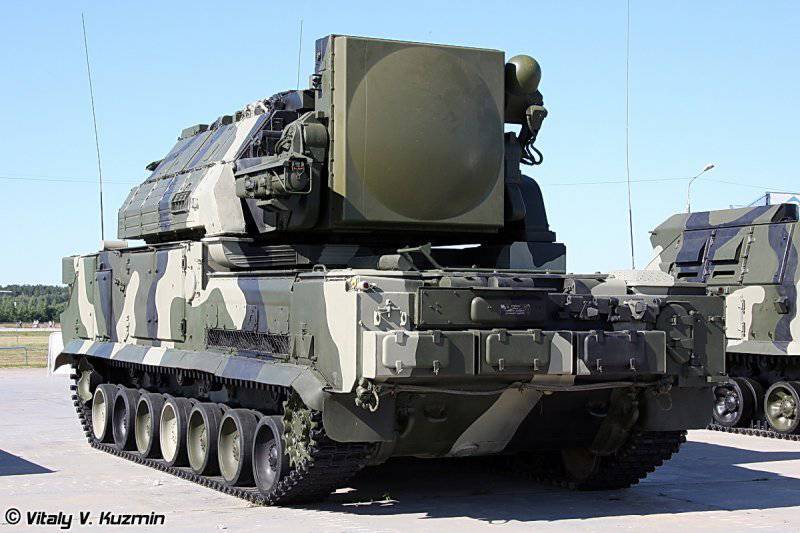
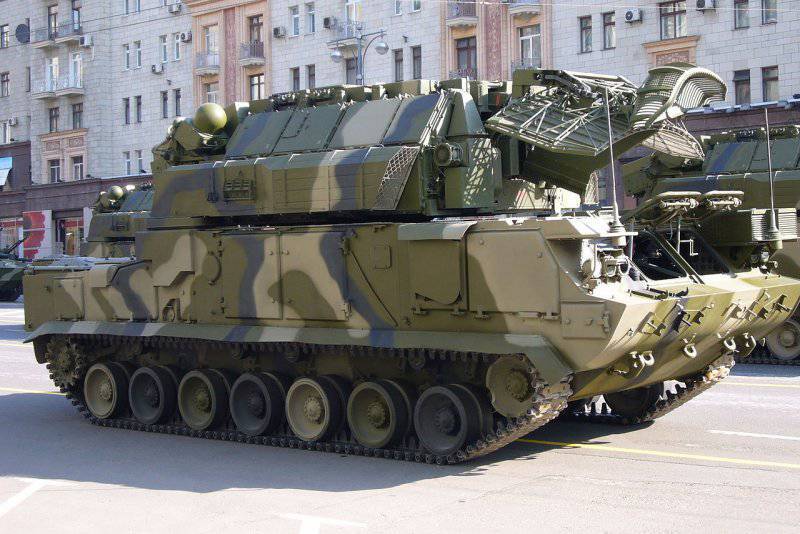
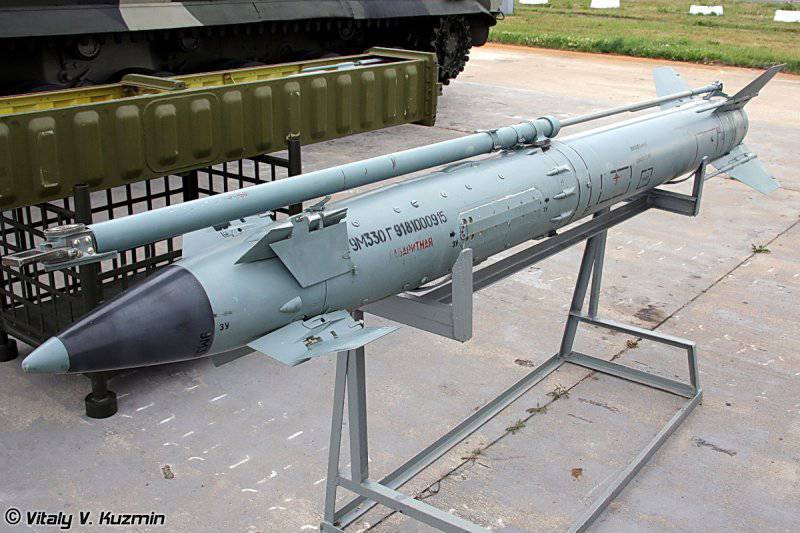
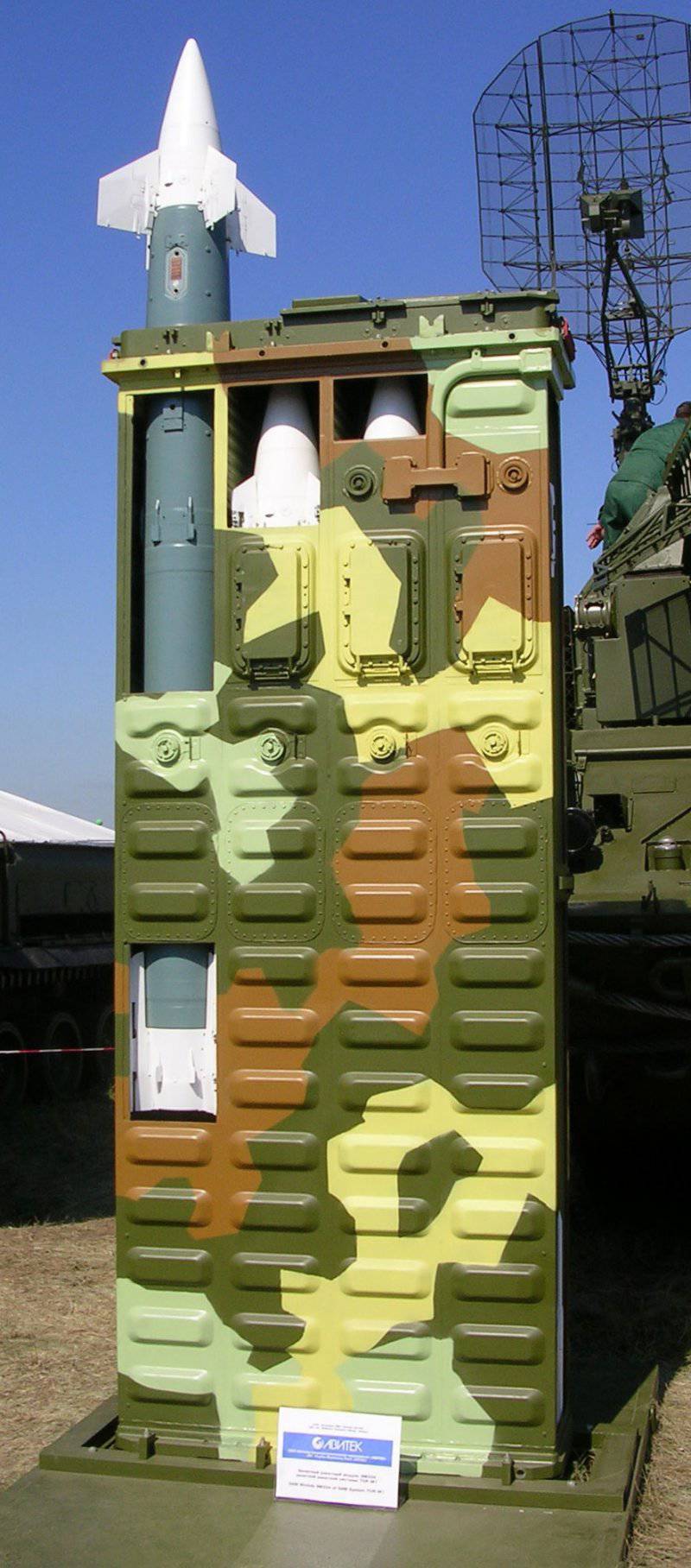
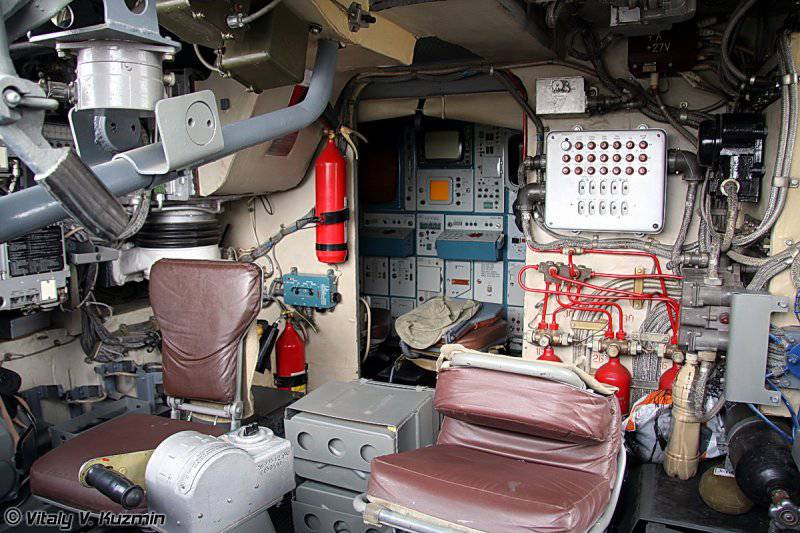
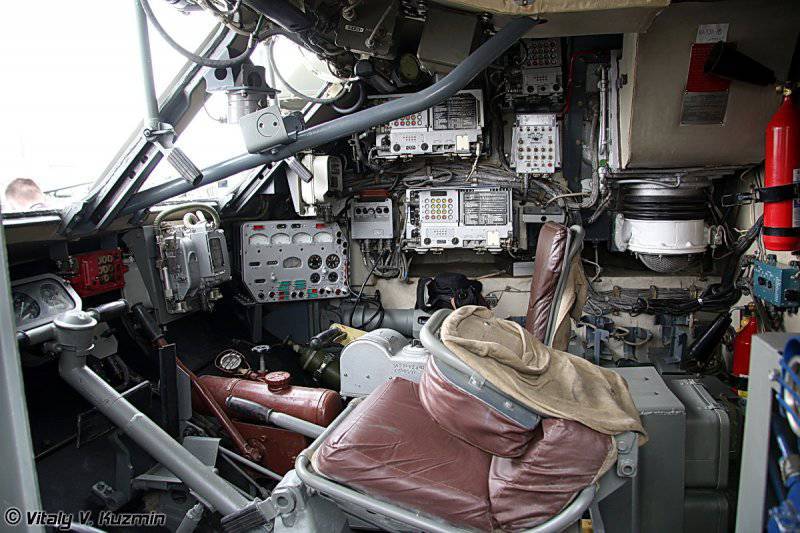
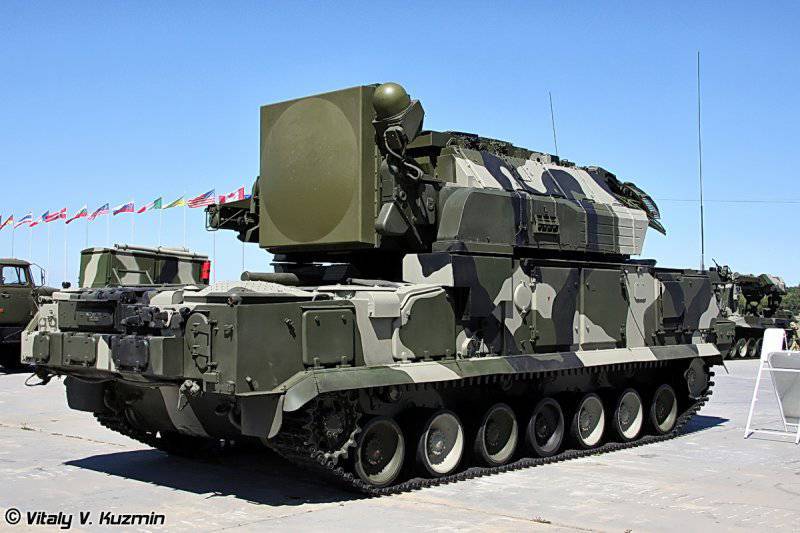
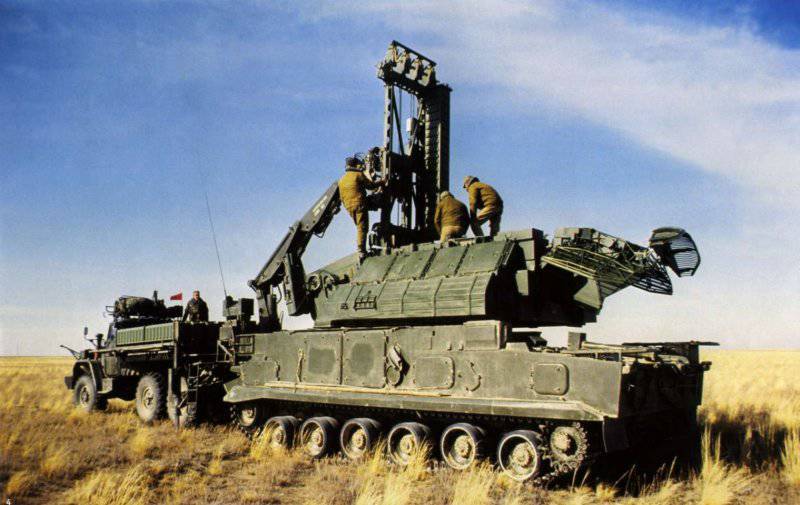
Information